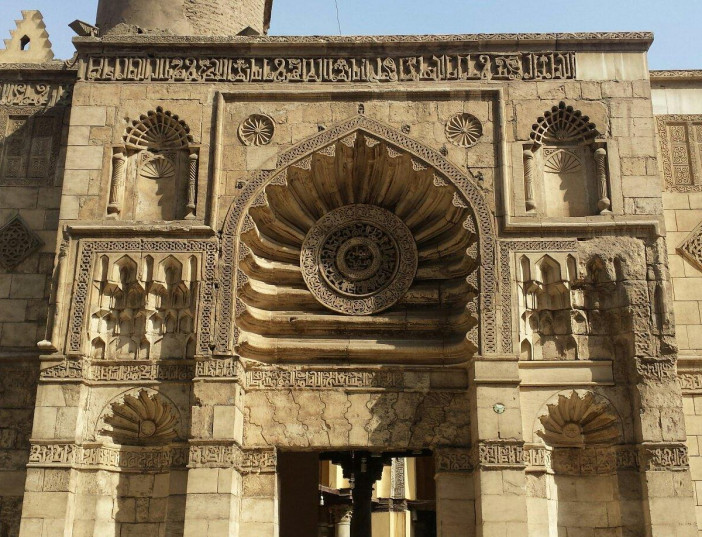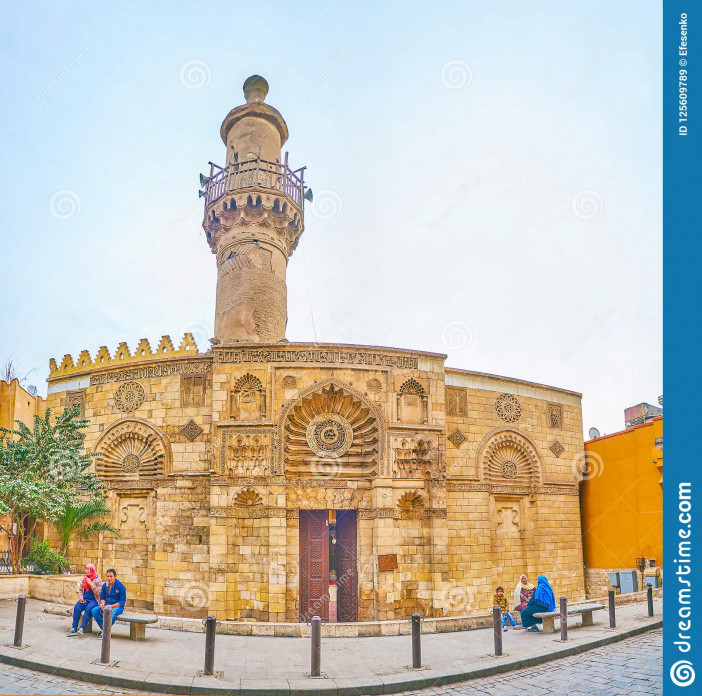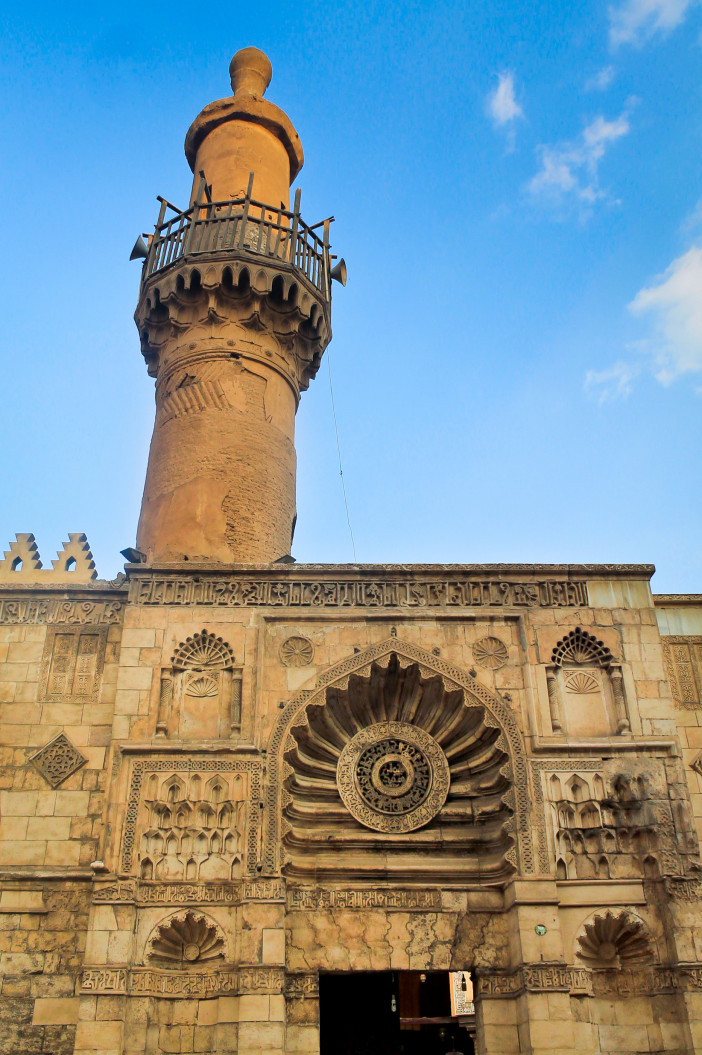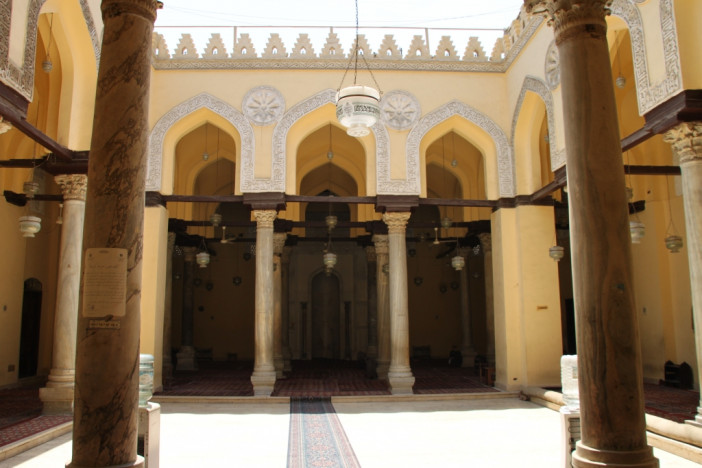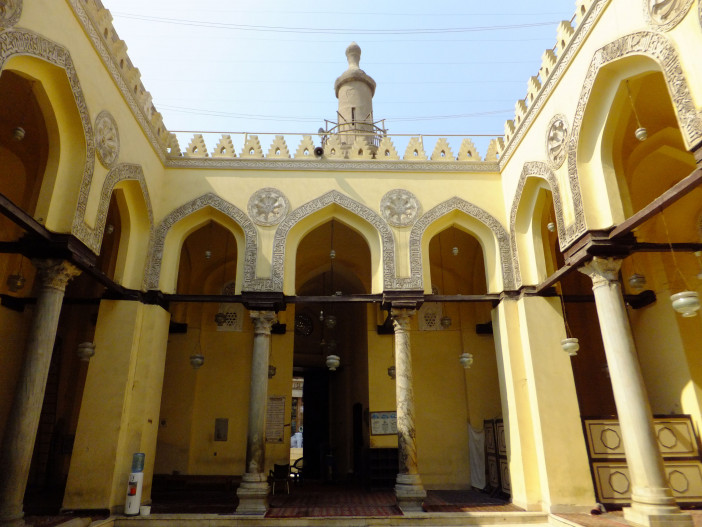Aqmar Mosque
History
The Mosque of al-Aqmar was built in Cairo in 1125. The Fatimid vizier al-Ma'mun al-Bata'ihi was instrumental in its construction, which took place during the caliphate of al-Āmir (r.1101-1130). Located on the main artery of the city, the mosque's elaborate ornamentation and design are seminal for Cairo's architecture, especially for the way its plan shifts to accommodate both the qibla orientation and the existing street pattern
Urban and Architectural
In plan it is a regular, rectangular hypostyle mosque with a square courtyard, but the depth of the façade is adjusted to fit the building behind to the dictates of the existing urban scheme.
Constructed of brick with stone facing, the façade is highly decorated with inscriptions and sculptural decoration. The entrance portal is set within an arch with keel-shaped niche. The interior of the niche is fluted, with a central medallion inscribed with the names of Muhammad and 'Ali, which are also inscribed on the chamfered corner of the building. The brick minaret, along with restorations including the mihrab and minbar, was introduced by the Mamluk Amir Yalbugha al-Salimi in 1397.
Description
Architect
Abu 'Abdallah Muhammad ibn Fatik supervised construction of the building and was vizier to Caliph al-Amir bi-Ahkam Allah. His name was written along with that of Caliph al-Amir in the foundation text on the building’s façade.
References
https://www.archnet.org/sites/2310
https://islamicart.museumwnf.org/database_item.php?id=monument;isl;eg;mon01;33;en
Details
Location
Al Moez Ldin Allah Al Fatmi, El-Gamaleya, El Gamaliya, Cairo Governorate, Égypte
Worshippers
350
Year of Build
1125
Area
700
Drawings
Map
History
The Mosque of al-Aqmar was built in Cairo in 1125. The Fatimid vizier al-Ma'mun al-Bata'ihi was instrumental in its construction, which took place during the caliphate of al-Āmir (r.1101-1130). Located on the main artery of the city, the mosque's elaborate ornamentation and design are seminal for Cairo's architecture, especially for the way its plan shifts to accommodate both the qibla orientation and the existing street pattern
Urban and Architectural
In plan it is a regular, rectangular hypostyle mosque with a square courtyard, but the depth of the façade is adjusted to fit the building behind to the dictates of the existing urban scheme.
Constructed of brick with stone facing, the façade is highly decorated with inscriptions and sculptural decoration. The entrance portal is set within an arch with keel-shaped niche. The interior of the niche is fluted, with a central medallion inscribed with the names of Muhammad and 'Ali, which are also inscribed on the chamfered corner of the building. The brick minaret, along with restorations including the mihrab and minbar, was introduced by the Mamluk Amir Yalbugha al-Salimi in 1397.
Description
Architect
Abu 'Abdallah Muhammad ibn Fatik supervised construction of the building and was vizier to Caliph al-Amir bi-Ahkam Allah. His name was written along with that of Caliph al-Amir in the foundation text on the building’s façade.


